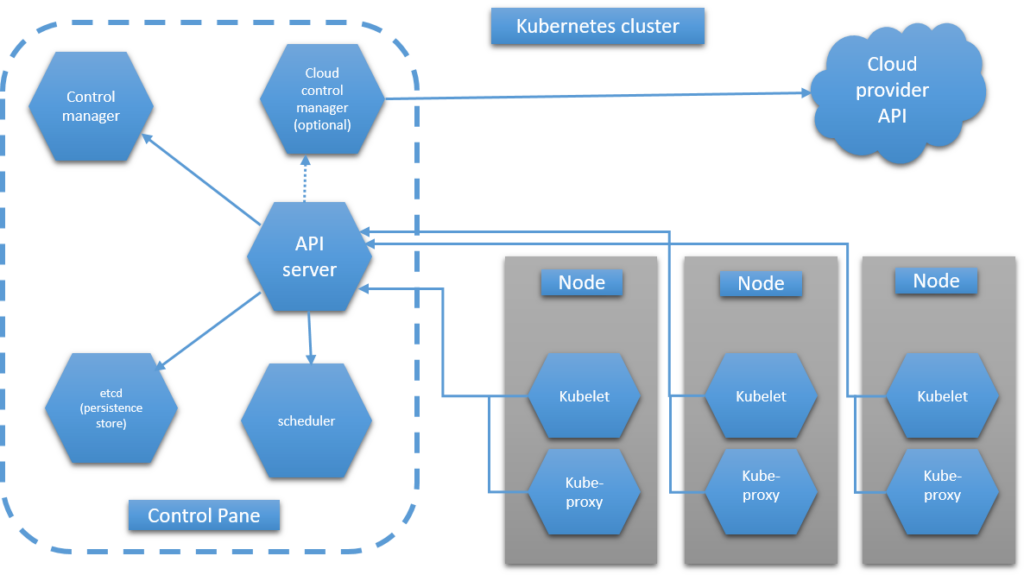In a Kubernetes cluster, the worker nodes are a fundamental component responsible for running and managing the deployed applications. These nodes, also known as worker machines or minions, form the computational power of the cluster and execute the workloads assigned to them by the control plane.
In this article, we will explore the concept of Kubernetes worker nodes, their characteristics, and their role in a Kubernetes cluster.
Worker nodes are the individual machines that contribute resources to the cluster, such as CPU, memory, and storage, and run the application containers. They receive instructions from the control plane and execute them by scheduling and managing the containers.

Characteristics of Kubernetes Worker Nodes
- Container Runtime: Worker nodes host a container runtime environment, such as Docker or containerd, responsible for running the application containers. The container runtime ensures proper isolation and execution of containers, providing the necessary environment for the applications to run efficiently.
- kubelet: The kubelet is an agent that runs on each worker node and acts as the primary point of contact between the control plane and the worker nodes. It communicates with the control plane, receives instructions, and ensures that the containers are running as expected on the node. The kubelet monitors the node’s health, manages the container lifecycle, and reports the node status back to the control plane.
- kube-proxy: The kube-proxy is another crucial component running on the worker nodes. It is responsible for network communication and load balancing between services in the cluster. It routes network traffic to the appropriate containers, provides network connectivity across the cluster, and implements the service abstraction provided by Kubernetes.
- Cluster Registration: Worker nodes need to be registered with the Kubernetes control plane to participate in the cluster. Once registered, the control plane can manage and schedule containers on the worker nodes. The registration process involves establishing a secure connection and authentication with the control plane, allowing the worker node to receive instructions and updates.
Role of Kubernetes Worker Nodes
Worker nodes play a crucial role in the operation of a Kubernetes cluster. They provide the computational resources required to run applications, execute containers, and ensure the availability and performance of the deployed workloads.
The worker nodes receive instructions from the control plane about which containers to run, where to schedule them, and how to manage their lifecycle. They monitor the health of the containers and the node itself, reporting any issues or failures to the control plane. If a container fails, the worker node takes action to restart or replace it to maintain the desired state of the cluster.
Worker nodes also handle networking and load balancing for the containers, enabling seamless communication between services and distributing traffic efficiently. They provide the network infrastructure necessary for inter-pod communication and external access to the applications running in the cluster.
Conclusion
Kubernetes worker nodes form the backbone of a Kubernetes cluster, providing the resources and execution environment for running containerized applications. They work in conjunction with the control plane to manage containers, ensure the health and availability of the cluster, and facilitate efficient networking. Understanding the role and characteristics of worker nodes is essential for effectively deploying and managing applications in a Kubernetes cluster, enabling scalable and resilient containerized environments.